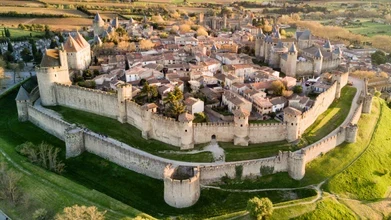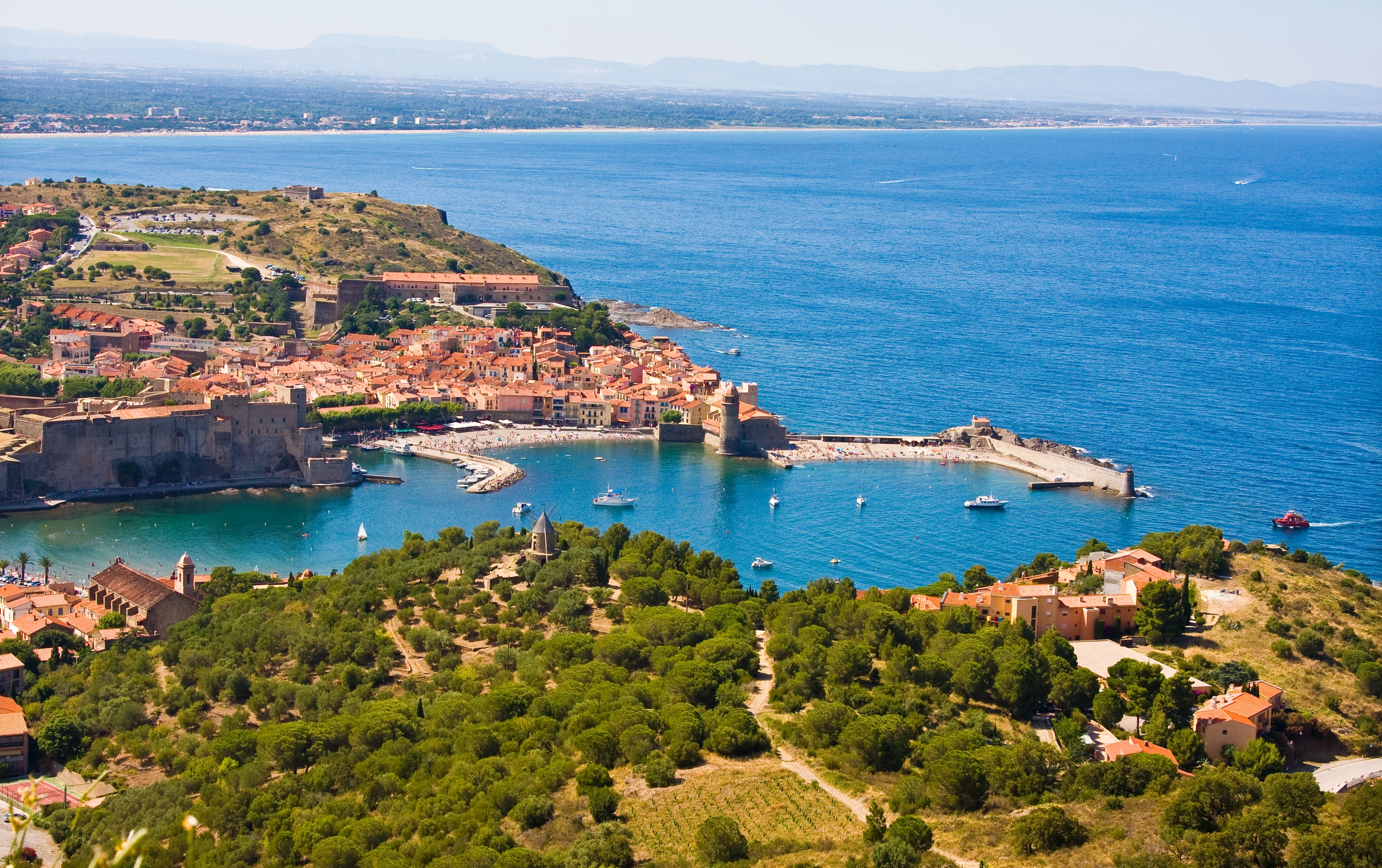
Travel information Languedoc-Roussillon

Border Controls
Please note that there may be increased border controls, which may lead to longer waiting times at the crossings.
Environmental sticker
In France, you may have to deal with environmental zones. Every city or department in France can set up such an environmental zone, either temporarily or permanently. With an environmental sticker on your car, you indicate that your car complies with the environmental requirements of that zone. Important, otherwise you will not be allowed to enter your desired zone! On the official website, you can see which category of sticker you need and order your sticker directly. Attention! The stickers can only be bought through the official website and shipping can take up to 14 days! https://certificat-air.gouv.fr/
Toll Roads
You pay tolls on most motorways in France. Current toll rates can be found here: https://www.autoroutes.fr/index.htm?lang=en. You can pay in cash, by credit card or with a toll badge. Toll badges can be purchased from the ANWB (among others) and are valid in 4 countries: France, Italy, Spain, and Portugal.
Fuel
Fuelling along the motorway is also often more expensive in France than along normal roads.
Charging stations
France has greatly expanded its charging station network in recent years. Still, it is good to check your route in advance.
Please note that in France it is mandatory to carry a warning triangle and a safety vest in your car.
In order to avoid inconveniences, fines or even penalties, it is also worth reading the travel information from the Federal Foreign Office!
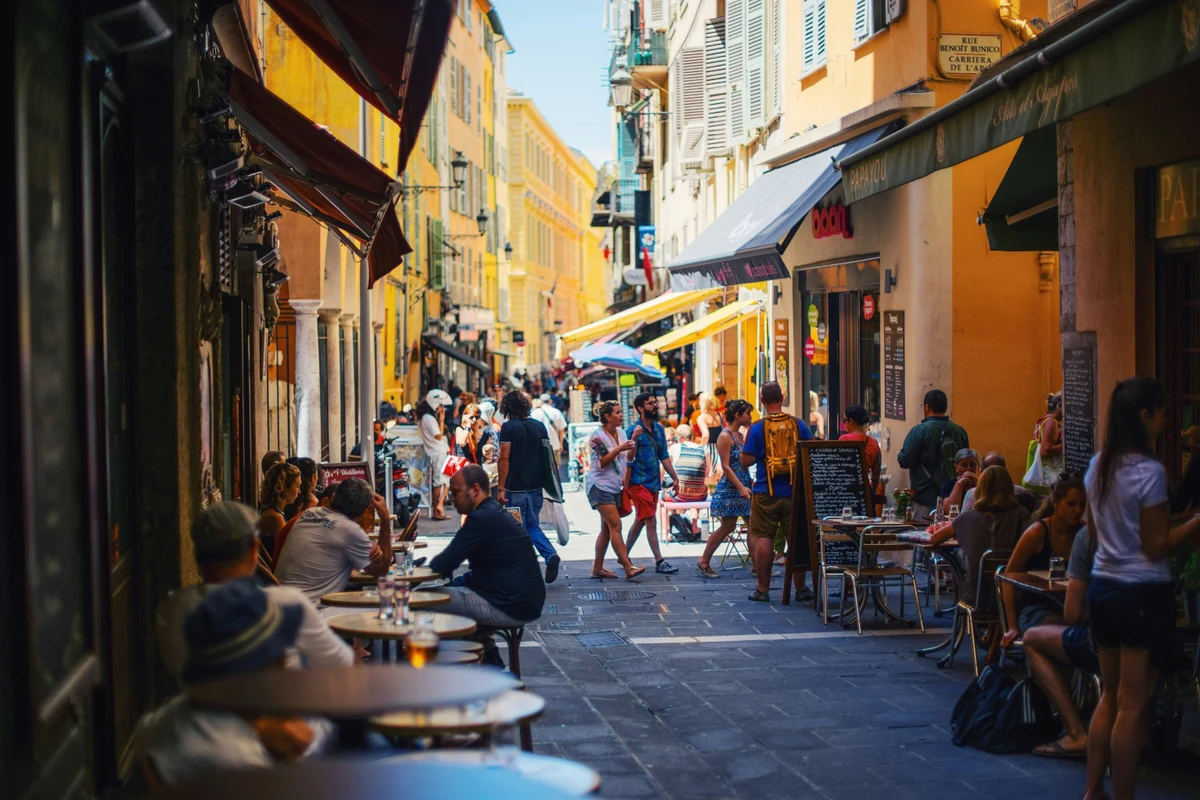
Climate in Languedoc-Roussillon
The climate of the sun-drenched Languedoc-Roussillon region is influenced by the Mediterranean. The coast offers ideal conditions for a year-round holiday. Summers are hot and dry. The hottest month is July, with an average temperature of 27°C during the day and 20°C at night. Strong winds (Mistral/Tramontane) from the north and northwest regularly provide cooling. In the mountainous hinterland, it is a few degrees cooler and there is more rain.
Tap water:
Tap water in France is generally safe to drink. If it says "Eau non potable " (not drinkable), choose bottled water.
Shopping and Eating in France
There are no standard opening hours in France. Grocery stores are open between 7:00 a.m. and 7:00 p.m. In many places, there is a lunchtime rest period for a few hours. Many bakeries are also open on Sunday mornings. Many shops are closed on Mondays. The larger supermarkets are open all day and often into the evening. They are often located outside of (city) centres. The best-known supermarkets include Leclerc, Auchan, Intermarché, and Carrefour, but France also has Lidl and Aldi.
Dinner often starts later than in Ireland. There's usually no one in the restaurant before 7 p.m. Dinner at the campsite is usually served earlier. At the bottom of the menu or your bill, you'll find the note "Service compris 15%." This means that the tip is already included. Locals usually give €1 to €1.50 per person in restaurants; 50 cents is sufficient in cafés.
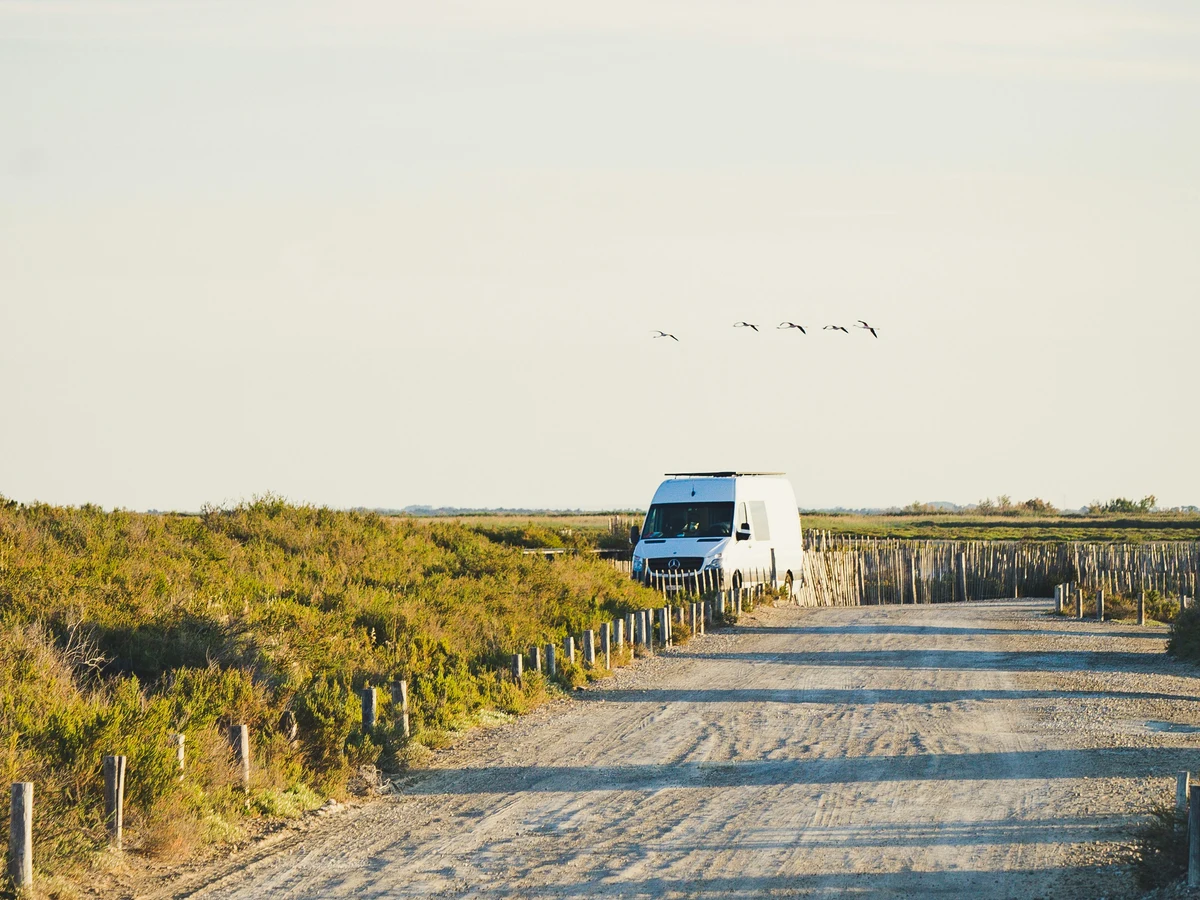
With the car
A car holiday to France is a great start to your holiday. Depending on your final destination, from Calais, you can be in Southern France in around 525 miles, in Central France in 450 miles and in Brittany in 600 miles.
By Ferry or Tunnel
Ferries are a relaxing and convenient way to travel. With a wide variety of routes available from the UK, you can reach campsites in many destinations across France easily, with the freedom and flexibility to journey at your own pace in your car!
There are many ferry lines from which to choose including
- Stena Line
- P&O Ferries
- Irish Ferries
- Brittany Ferries
- DFDS Ferries
Ferry routes to France
- Dover to Calais
- Dover to Dunkirk
- Folkestone to Calais Eurotunnel
- Newhaven to Dieppe
- Plymouth to Roscoff
- Poole to Cherbourg
- Poole to St Malo
- Portsmouth to St Malo
Winter in France
Are you going to France in winter? Bear in mind that it is then compulsory to have winter tyres in the mountain areas. Don't have winter tyres? Then make sure you have snow chains with you.
By Plane
The two largest airports in Languedoc-Roussillon are Carcassonne and Montpellier. From here, you can easily rent a car or use the extensive public transport system to get to your holiday destination. Larger holiday resorts often also offer a shuttle service. Please inquire directly with your campsite/holiday park.
Public Transport
Public transport is also a good option in France. The major cities have excellent metro and train connections. Buses also run back and forth to well-known destinations. You'll also find plenty of taxis in France. Apps like Uber are also available in French cities.

Healthcare
France is known as one of the best in the world when it comes to healthcare. The European Health Insurance Card (EHIC) entitles you to necessary medical care while on holiday in France. Pharmacies in France are easily identified by the green cross. The European emergency number 112 also applies here.
Money Matters
Payments in France are made in the Euro. ATMs are plentiful and payments can be made almost everywhere by debit and credit cards.
Sockets
Sockets in your accommodation may not be the same in France as in Ireland. In France, there are two associated plug types, types C and E. Plug type C is the plug that has two round pins and plug type E is the plug that has two round pins and a hole for the socket's male earthing pin. France operates on a 230V supply voltage and 50Hz. It may be handy to bring a 2-pin domestic Euro conversion plug.
Traveling with your dog
France is a dog-friendly country, but not all dogs are allowed. You will need an EU pet passport for your dog or cat, available from your vet. Dogs and cats must be vaccinated against rabies at least 21 days before travelling. The compulsory chip must be inserted before the rabies vaccination (may be done on the same day). More information can be found here.
Top sights in Languedoc-Roussillon
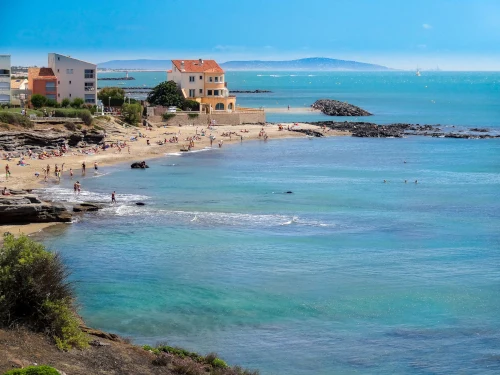
Beaches of Languedoc-Roussillon
This sun-drenched region is perfect for wonderful beach holidays. Endless beaches await you everywhere, often with shallow waters, making them suitable for small children. The 10 most beautiful beaches can be found in Grau du Roi, Port Camargue, La Grand Motte, Leucate, Marseillan, Cap d'Agde, Montpellier, Portiragnes, Bezier/Valras, Narbonne, and Gruissan.
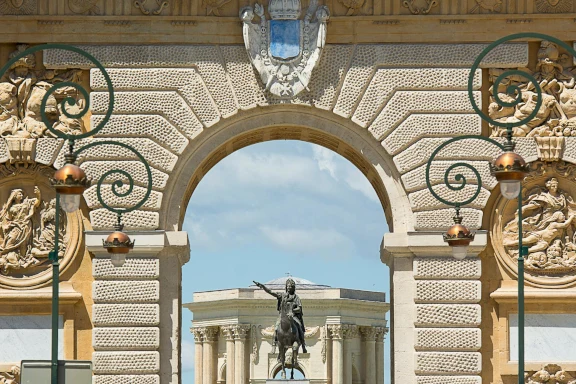
Montpellier
A blend of modernity and tradition, culture and nature, and stunning cuisine make this beautiful city a must-see destination. Things to see include magnificent historic buildings like the Porte du Peyron and the Chateau de Flaugergues, modern buildings like the Arbe Blanc, the Botanical Garden, the Amazon House, and much more.
Tip: Visit the Marché du Lez with its food and fashion trucks and flea market.
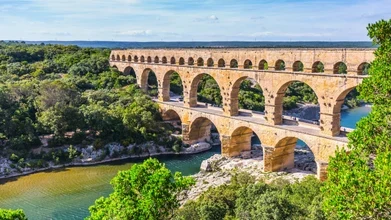
Pont du Gard
The largest aqueduct of the Roman Empire is worth a visit if you're near Nîmes. This Roman building is an architectural masterpiece dating back to the 1st century and is even more impressive in person than in photos. There's also plenty to do around the Pont du Gard to fill a day here.
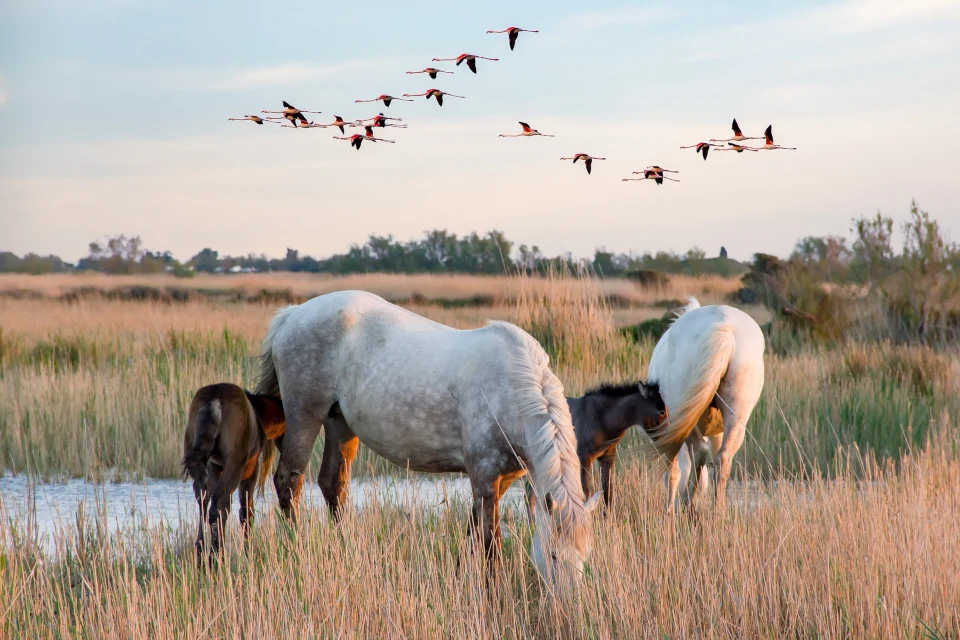
Camargue
The Camargue is a vast nature reserve with pristine marshes, large salt marshes, rice paddies, dunes, and pastures. The best way to discover the treasures of this idyllic landscape is by boat, on foot, by mountain bike, or on the back of one of the famous white Camargue horses. Admire the flamingos, black bulls, and the incredible diversity of flora and fauna. Refresh yourself and have a picnic on Europe's longest beach: La Plage de l'Espiguette in Grau-du-Roi.

Étangs:
These shallow lagoons, ponds, or pools offer a wealth of recreational opportunities and interesting insights into the region's traditions. Mussels and oysters are farmed here, sea salt is extracted, and fishing is practised. Swimming in safe, shallow waters and many water sports such as sailing, kayaking, windsurfing, kitesurfing, and even diving are also possible. Famous Étangs include: Etang Salses-Leucate, Étang de l'Or, Étang de Thau, Étang de Bages, and Étang de Canet-Saint-Nazaire.
Disclaimer: The information and links on this page have been carefully selected and compiled. However, we are not liable for any incorrect or incomplete information. The external links we use are for information purposes only. These websites are not owned by our company and are not controlled or approved by us. You are responsible for ensuring you have the necessary documents and information. We recommend that you check with the relevant authorities for the most up-to-date information well in advance of your holiday.
